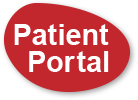To Buy Keflex Online Visit Our Pharmacy ↓
 Keflex Vs. Other Antibiotics: Choosing the Right Treatment
Keflex Vs. Other Antibiotics: Choosing the Right Treatment
Keflex, known generically as cephalexin, is a first-generation cephalosporin antibiotic hailed for its efficacy against a wide range of bacterial infections, particularly those caused by gram-positive bacteria. Its mechanism of action lies in disrupting bacterial cell wall synthesis, ultimately leading to cell death – an effective way to stop infections in their tracks. With oral and parenteral formulations available, Keflex offers versatility in administration, making it a convenient option for various patient needs.
What truly differentiates Keflex is its lower affinity for producing allergic reactions in patients with penicillin allergies, though caution is still advised. Moreover, its favorable pharmacokinetic profile allows for sustained levels in the body, thereby ensuring consistent therapeutic effects. This makes it an excellent choice for treating conditions such as streptococcal pharyngitis, skin infections, and uncomplicated urinary tract infections, where it has proven to be highly effective.
Antibiotic Battles: Understanding Spectrum of Activity
Antibiotics are categorized based on their spectrum of activity – the range of bacteria they are effective against. Broad-spectrum antibiotics, such as amoxicillin, can target a wide variety of bacterial species, making them a common first-line treatment. However, their extensive use can unintentionally affect beneficial bacteria and potentially lead to antibiotic resistance. On the other hand, narrow-spectrum antibiotics, like Keflex (cefalexin), are tailored to combat specific types of bacteria. This focused approach reduces the risk of disrupting the body's microbiota and lessens the chance of bacteria developing resistance.
The choice between a broad-spectrum and narrow-spectrum antibiotic hinges on the infection's nature. When the causative bacteria are well-identified, narrow-spectrum antibiotics are preferable for their targeted action, which spares the beneficial bacteria and reduces the likelihood of resistance. In cases where the infecting organism is unknown or a polymicrobial infection is suspected, a broad-spectrum antibiotic may be necessary to cover a range of possible pathogens. Keflex's role is crucial when the causative agents are susceptible to its action, ensuring an effective treatment while mitigating wider impacts on the microbial flora.
Side Effects Showdown: Keflex Versus Rivals
Keflex, also known as cephalexin, is a cephalosporin antibiotic and is commonly preferred for its effectiveness and lower incidence of side effects. It is generally well-tolerated, with common adverse reactions including gastrointestinal distress, such as diarrhea, nausea, and vomiting. Compared to other antibiotics, such as fluoroquinolones, Keflex tends to present fewer serious side effects, which can include tendon damage and central nervous system issues. For those with penicillin allergies, Keflex often serves as a safer alternative, though it still carries a risk of allergic reactions in some individuals.
When considering the side effect profiles of antibiotics, it is crucial to weigh the benefits against the potential for harm. In the case of Keflex versus macrolides like azithromycin, Keflex's side effects are typically mild and transient. While macrolides can cause arrhythmias and hearing issues, such symptoms are rare with Keflex use. The choice of antibiotic often comes down to the patient's medical history and the type of infection being treated, with the goal of using the antibiotic with the least adverse impact on the patient's overall health.
Resistance Fighters: the Role of Keflex in Treatment
Keflex (cefalexin) is a first-generation cephalosporin antibiotic that is often chosen for its efficacy against Gram-positive bacteria, such as Staphylococcus and Streptococcus species. Its role in combating bacterial infections is particularly crucial given the escalation of antibiotic-resistant strains. The drug operates by disrupting the formation of the bacterial cell wall, ultimately leading to cell death. This mechanism of action helps prevent the emergence of resistance during treatment, making Keflex a valuable weapon in the medical arsenal against susceptible bacterial infections.
As bacteria evolve, the efficacy of antibiotics is challenged, making resistance a significant concern in treatment decisions. Keflex, however, retains its effectiveness in many instances, which can be attributed to its stable structure against beta-lactamase enzymes produced by some bacteria to inactivate antibiotics. This stability means that Keflex continues to be a reliable option for healthcare providers when they encounter common infections that have not developed resistance to this class of drugs, preserving its position in treatment guidelines.
Decoding Dosage: Tailoring Treatments for Patients
In the realm of antibiotics, precise dosage is pivotal to both efficacy and safety, and this is where Keflex showcases its flexibility. For different types of infections—from mild skin conditions to severe respiratory issues—the dosage of Keflex can be calibrated to optimize therapeutic outcomes. Moreover, practitioners often consider patient-specific factors such as kidney function, age, and potential drug interactions, which can influence the metabolism and clearance of the medication. Personalizing the dose is not just about the milligrams prescribed; it's about aligning the regimen with the individual's unique clinical scenario to ensure the best possible results.
For instance, a standard adult dosage for a straightforward bacterial infection might be significantly reduced for a child or an elder, highlighting the drug’s adaptable nature. Additionally, frequency and duration of the treatment course are fine-tuned to minimize the risk of adverse effects while concurrently maximizing the drug’s potential to eradicate the infection. This patient-centric approach is critical in achieving optimal outcomes while maintaining a safe therapeutic window. Monitoring and adjustments by healthcare professionals are vital components in the success of treatment with Keflex, necessitating regular assessment and sometimes necessitating alterations to the prescribed routine based on patient response and tolerability.
Real-world Outcomes: Patient Stories and Success Rates
Patient narratives often underscore the effectiveness of treatment in a way that clinical data alone cannot. For example, a middle-aged patient suffering from a severe urinary tract infection (UTI) initially received a broad-spectrum antibiotic but did not achieve symptom relief. After a sensitivity analysis, the physician switched the treatment to Keflex, a drug better targeted to the patient's specific bacterial strain. The patient reported significant improvement within 48 hours, illustrating Keflex's efficacy when accurately matched to the pathogen causing the infection.
Success rates of antibiotics can be quantified in clinical trials, but real-world data offers a complementary perspective. Keflex, being a first-generation cephalosporin, has been effective in treating respiratory tract infections, skin infections, and more. A retrospective study on patients with skin and soft tissue infections showed that those treated with Keflex had similar recovery rates to those treated with other antibiotics but with fewer instances of treatment changes due to adverse effects or non-responsiveness. This highlights Keflex as a reliable option with a high success rate, provided it is used judiciously and tailored to the infection at hand.
http://metabolicleader.com/images/homepage_extras/png/symbicort-inhaler.html https://imed.isid.org/wp-content/languages/themes/po/aciphex.html https://www.soundviewmed.com/wp-content/uploads/2022/08/png/phenergan.html
![]()








 We are now located at
We are now located at


